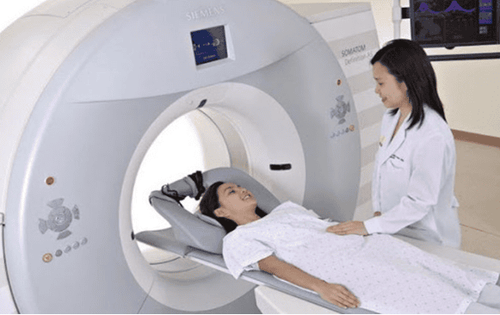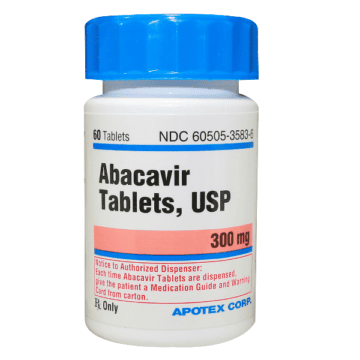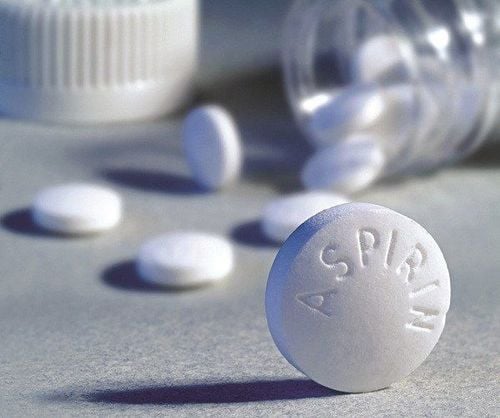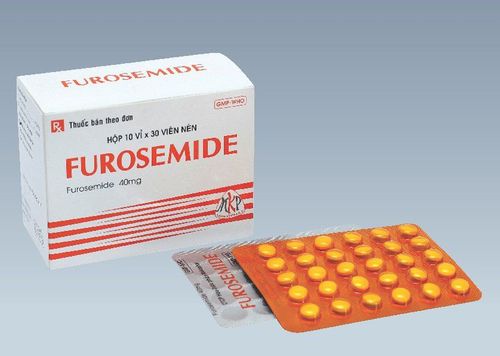This is an automatically translated article.
The article is professionally consulted by MSc, BS. Dang Manh Cuong - Radiologist - Radiology Department - Vinmec Central Park International General Hospital. The doctor has over 18 years of experience in the field of ultrasound - diagnostic imaging.You probably already know calcium is good for bone health, but did you know calcium can also be an important clue to your heart health. Doctors may use a method called coronary angiography to get a clearer picture of a person's risk of heart attack.
1. What is coronary calcium angiography?
Cardiac angiography or coronary calcium scan (English name is coronary calcium scan), is an imaging technique that uses specialized X-rays to provide images of your heart to help doctors detect and measure plaques that contain plaque. calcium in the arteries.Plaque inside the heart arteries can form, grow, and restrict blood flow to the heart muscles. Measuring calcified plaque with coronary angiography can allow your doctor to identify possible coronary artery disease before you have signs and symptoms.
Your doctor will use your test results to determine if you may need medication or lifestyle changes to reduce your risk of heart attack or other heart problems.

2. When is a coronary calcium scan needed?
Your doctor may order a coronary calcium angiogram to better understand your risk for heart disease or need to adjust your treatment regimen.Coronary angiography uses specialized X-ray technology called multidetector row or multipoint computed tomography (CT), which creates multiple images of plaque deposited in blood vessels.
Dental plaque is made up of fats, cholesterol, calcium and other substances in the blood. It develops gradually over time, long before there are any signs or symptoms of the disease. These deposits can restrict the flow of oxygen-rich blood to the heart muscles. In addition, the plaque can also break off, causing blood clots and causing a heart attack.
Coronary angiography can help your doctor develop a treatment plan if you are at low to moderate risk for heart disease or if your risk for heart disease is unclear. In addition, coronary angiography can also help motivate people at average risk to make important lifestyle changes and follow treatment plans.
However, cardiac imaging requires exposure to radiation. Although this exposure is known to be safe for recipients of coronary angiography, this technique is not recommended if the risk of radiation exposure is high and there are potential benefits to this technique.
According to the American College of Cardiology (ACC) and American Heart Association (AHA) guidelines, coronary angiography may not be indicated for people with one of the following:
Men under 40 years old and women under 50 years old, because of these circumstances it can be difficult to detect calcium when you are under this age. Those at very low risk, as this technique can hardly detect calcium deposits in the blood vessels if you don't have a family history of heart attacks at a young age. People who are already at high risk (especially heavy smokers or those with diabetes or very high cholesterol) because a coronary angiogram probably won't provide any additional information to treatment guidelines People who have symptoms or are diagnosed with coronary artery disease because this technique will not help doctors better understand disease progression or risk People who have had an abnormal coronary calcium angiogram often.

3. Risks of coronary calcium angiography
Coronary angiography uses X-ray technology, which requires the patient to be exposed to radiation. However, this level of exposure is generally safe, about the same amount of radiation you are naturally exposed to in a year.Some medical facilities may advertise coronary angiography as an easy way to measure heart attack risk and be done without a doctor's consultation or prescription.
However, these coronary calcium scan results should not be used alone to predict your overall health and heart disease risk. It is best used in conjunction with other health information.
4. The process of coronary calcium angiography
4.1 Before coronary angiography When scheduling coronary angiography, ask the medical staff:Is there anything special to pay attention to? How early should I arrive? What documents or identification will I need? Food and medicine. You may be asked not to use caffeine and not to smoke for four hours before the scan.
Clothing and personal belongings. When you arrive for the check-in, you will be asked to remove your shirt and put on a medical gown. You will also need to remove jewelry around your neck or near your chest.

During the cardiac scan, you lie on your back on a movable table that slides into the CT angiogram tube. Your head is always outside the camera. The shooting room is always cool.
You may be given pills or injections to slow your heart down to help ensure clear and sharp images. If you are nervous or anxious, your doctor may prescribe medication to help you calm down.
You will be asked to lie still and hold your breath for a few seconds while shooting. The technician operates the camera in the next room, but can see and talk to you during the scan. The whole process will take about 10 to 15 minutes.
4.3 After a coronary angiogram Normally, no special precautions are needed after a coronary angiogram. You should be able to drive yourself home and resume your daily activities.
Results
The results of a coronary angiogram are usually given as a number and are called the Agatston score. The score reflects the total area of calcium deposition and the density of calcium. In the presence of calcium, the higher the score, the higher the risk of heart disease.
Score 0 means no calcium in the heart. It indicates a very low chance of having a future heart attack. A score of 100 to 300 means that plaque deposition is moderate. It is associated with a relatively high risk of having a heart attack or other heart disease within the next 3-5 years. A score greater than 300 is a sign of serious illness and a high risk of heart attack. You can also get a percentage score, which shows how much calcium you have compared to people of the same age and sex.
Your doctor will discuss the results of your coronary calcium angiogram with you. Depending on the results, one or more of the following strategies may be needed:
Do not change your current treatment regimen Change your medication type or dosage Change your diet and exercise routine Goals new weight loss Perform other imaging tests and techniques Make a follow-up appointment to monitor health and plan treatment The methods of diagnosing coronary heart disease at Vinmec International General Hospital are performed by a team of experienced doctors, a system of modern machinery and equipment such as:
The clinic is equipped with state-of-the-art cardiac diagnostic equipment such as 2D, 3D echocardiography with full ultrasound features through the esophagus and chest wall, electrocardiogram machine, Holter blood pressure machine, Holter electrocardiogram machine, stress ECG machine: Running mat, tilt bike, tilt test... Hybrid operating room with equipment State-of-the-art equipment such as DSA angiography, integrated anesthesia machines bring the highest efficiency in the treatment of cardiovascular diseases such as combined surgery and angioplasty and interventional angioplasty. NH, coronary stent placement with the most modern minimally invasive technique. Cathlab room with state-of-the-art equipment meets the requirements of imaging and intervention when diagnosing and treating cardiovascular diseases. Comprehensive, professional medical examination, consultation and treatment service with appointment booking helps you to be more proactive in checking the health of yourself and your family. The medical examination and treatment space at Vinmec is modern, civilized, luxurious and ensures maximum sterilization.
Please dial HOTLINE for more information or register for an appointment HERE. Download MyVinmec app to make appointments faster and to manage your bookings easily.














